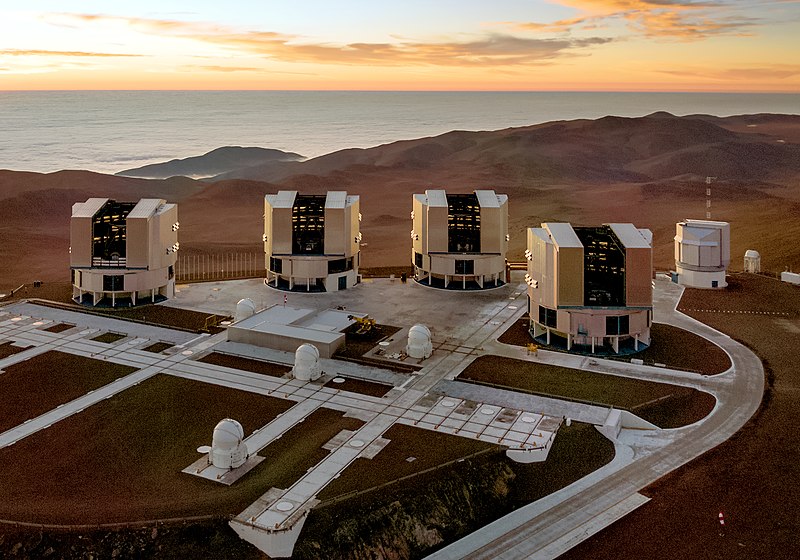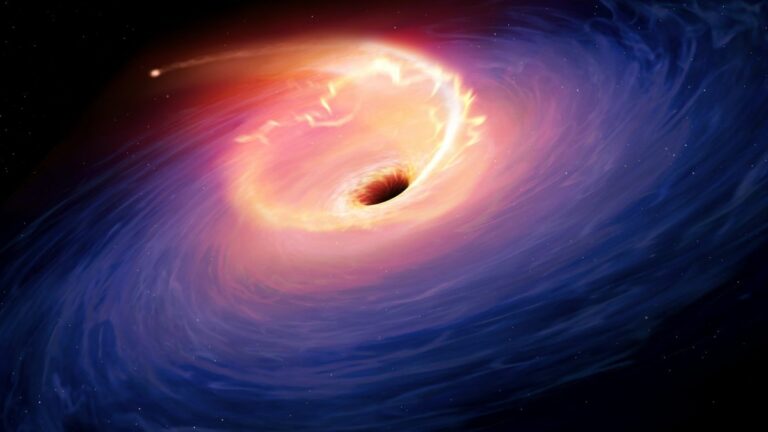A supermassive black hole located 8.5 billion light years away is observed feasting on a violent stellar meal.
Obliterated star produces some of the brightest relativistic jet flashes ever seen.
A galaxy’s central supermassive black hole located 8.5 billion light-years away has torn apart a neighboring star, creating some of the most luminous jets ever observed. When stars or other objects come too close to a supermassive black hole, they are destroyed by its massive gravitational force.
These events, called tidal disruption events (TDEs), produce a disk of material that orbits the black hole and sometimes, as in the case of supermassive black hole AT2022cmc, expel bright beams of matter traveling at speeds near that of light.

In roughly 1% of cases, luminous jets occur as a type of astronomical transient, as they are brief in duration. In February of this year, bright flashes from such jets were identified through a new technique using data from the Zwicky Transient Facility (ZTF), which can analyze the equivalent of a million pages of information every night. The rapid results enabled a research team in the US to promptly conduct multiwavelength observations of the system from various observatories. The jets were detectable across a range of wavelengths, from X-rays to radio waves, and additional observations allowed the European Southern Observatory’s Very Large Telescope to determine that AT2022cmc is located 8.5 billion light years away, while NASA’s Hubble telescope was able to precisely identify AT2022cmc’s location through optical and infrared observations.
“The last time scientists discovered one of these jets was well over a decade ago,” said Michael Coughlin, an assistant professor of astronomy at the University of Minnesota Twin Cities and co-lead on the paper published in Nature. “From the data we have, we can estimate that relativistic jets are launched in only 1% of these destructive events, making AT2022cmc an extremely rare occurrence.”
The reason for the rarity of this behavior is still unknown, but the team of researchers thinks that the swift rotation of AT2022cmc fuels the luminous jets, contributing to the present comprehension of the physics behind these massive dead stars at the cores of galaxies.

The discovery of this event and the approach used to detect it are significant for future research by astronomers as they examine the skies for similar phenomena. Lead author Igor Andreoni of the Department of Astronomy at UMD and NASA Goddard Space Flight Center states that “Scientists can use AT2022cmc as a model for what to look for and find more disruptive events from distant black holes.” This includes the use of ground-based optical surveys instead of gamma-ray observatories in space, which have been the primary means of discovering previous jets.
Andreoni adds that their new search method allows them to quickly identify rare cosmic events in ZTF survey data.
“And since ZTF and upcoming larger surveys such as Vera Rubin’s Large Synoptic Survey Telescope scan the sky so frequently, we can now expect to uncover a wealth of rare, or previously undiscovered cosmic events and study them in detail. More than ever, big data mining is an important tool to advance our knowledge of the universe”.
Do not forget to share your opinion with us to provide you with the best posts !




0 Comments